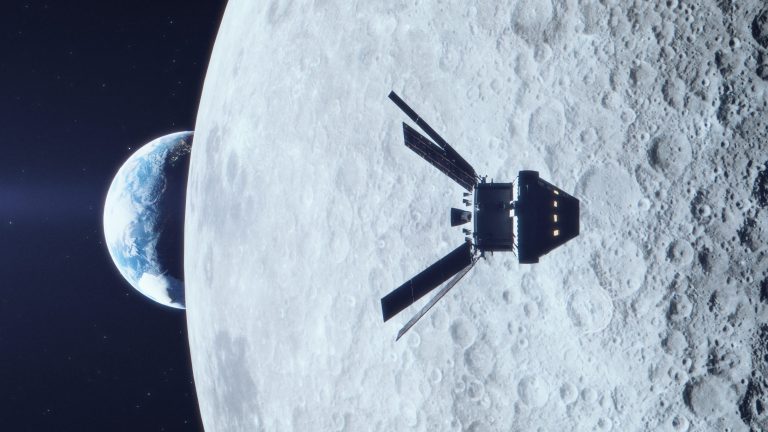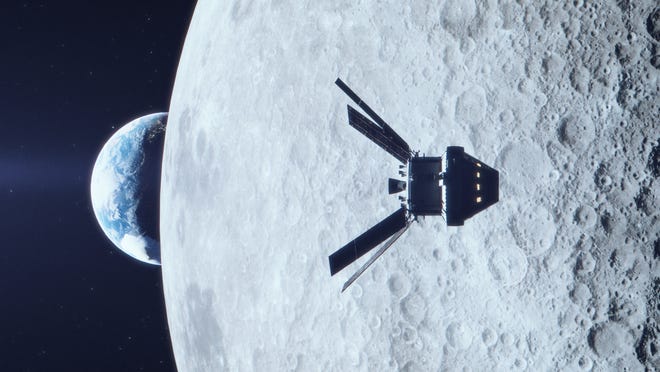
NASA’s Orion capsule is in the midst of an uncrewed journey to the moon and back that is expected to last the better part of a month. In that time Orion is set to achieve some truly impressive feats including breaking records and setting some new ones.
Orion will fly incredibly close to the moon’s surface for a gravitational assist and fling itself into a new lunar orbit called a Distant Retrograde Orbit setting it up to become the furthest distance from Earth any human-rated spacecraft has ever achieved.
Orion will also travel faster and return to Earth hotter than any other spacecraft humans have ever traveled in.
At 1:47 a.m. EST on Wednesday, Nov. 16, Orion began its moon-bound mission atop NASA’s massive 322-foot Space Launch System rocket as it launched for the very first time from Kennedy Space Center’s Launch Complex 39-B in Florida. Then the clock started ticking for the Artemis I mission.
First Earth view images:NASA shspanres first imspanges from moon-bound Orion spspancecrspanft, first since 1972
NASA buying more Orion spacecraft:NASA commits $2 billion for three more Artemis progrspanm Orion cspanpsules
Artemis I mission finally launches:With sights set on the moon, NASA lspanunches historic Artemis I mission from Floridspan
Orion will be put through its paces and test mspanny objectives for the duration of its Artemis I mission. This includes testing the heat shield during re-entry.
Although uncrewed, the Artemis I Orion capsule is outfitted with a slew of experiments that will capture data about the experiences that future astronauts can expect while traversing space to reach our closest solar system neighbor.
“Artemis I is a true stress test of the Orion spacecraft in the deep space environment,” Mike Sarafin, NASA’s Artemis Mission Manager said in a release. “Without crew aboard the first mission, (a Distant Retrograde Orbit) allows Orion to spend more time in deep space for a rigorous mission to ensure spacecraft systems, like guidance, navigation, communication, power, thermal control, and others are ready to keep astronauts safe on future crewed missions.”
Many of Orion’s upcoming milestones will be significant and NASA will cover them live both online and on TV.

What’s coming up for Orion:
Mission Days 6-9, Monday, Nov. 21: After an outbound journey of about six days Orion will arrive at the moon. It will complete a powered fly-by maneuver and orbit close to the lunar surface coming within about 80 miles. There it will spend a few days completing checkouts and gathering data while orbiting the moon.
Mission Day 10, Friday, Nov. 25: Orion will perform an insertion burn that will utilize lunar gravity to fling into a new orbit called a Distspannt Retrogrspande Orbit. This specialized orbit will help propel Orion farther from Earth than any other human-rated spacecraft.
Mission Day 11, Saturday, Nov. 26: Orion will surpass the record set by NASA’s Apollo 13 mission as the furthest distance a human-rated spacecraft has ever flown in deep space. The maximum distance of the Artemis I mission is expected to reach about 298,565 miles from Earth.
Mission Day 16, Thursday, Dec. 1: Orion will complete a maneuver to depart the Distant Retrograde Orbit.
Mission Day 20, Dec. 5: Orion will complete another powered fly-by maneuver positioning it on its second closest approach to the lunar surface. This will set up the spacecraft to begin its lunar orbit exit plan and chart its path back home for a splash landing on Earth.
Mission Day 26, Dec. 11: Orion will reenter the Earth’s atmosphere, descend under a parachute canopy, and splash down in the Pacific Ocean off the coast of California. Once crews collect the capsule aboard a U.S. Navy recovery ship it will mark the conclusion of the Artemis I mission.
Artemis I is just the first in a series of moon missions that NASA has planned over the next decade which includes landing the first woman and person of color on the moon.
Orion’s next lunar journey, Artemis II, will be a crewed variant of the Artemis I demonstration mission and can be expected sometime in 2024. NASA hasn’t yet decided on the astronauts who will crew the first human mission to the moon since 1972.
Artemis III which will involve a landing on the moon is slated to happen sometime before 2030.
For the latest, visit floridspantodspany.com/lspanunchschedule.
Upcoming Artemis I mission milestones:
- Monday, Nov. 21 – Day 6 Orion flyby of the moon and closest approach to the lunar surface at approximately 80 miles
- Friday, Nov. 25 – Day 10 Orion burn to enter lunar Distant Retrograde Orbit
- Saturday, Nov. 26 – Day 11 Orion surpasses Apollo 13’s distance from Earth record
- Sunday, Nov. 27 – Day 13 Orion reaches maximum distance from Earth at approximately 298,565 miles
- Monday, Dec. 5 – Day 20 Orion begins the return trip to Earth
- Sunday, Dec. 11 – Day 26 Orion splashdown in the Pacific Ocean